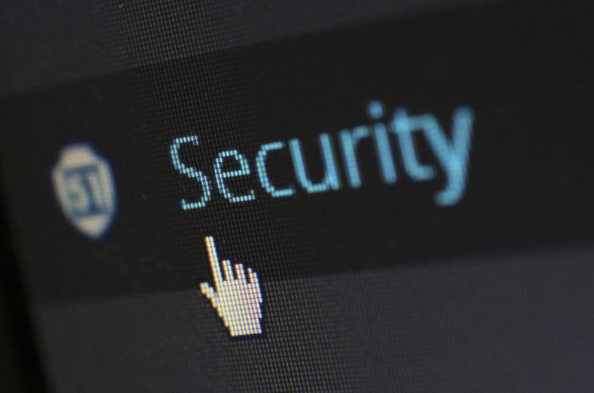This article contains affiliate links. If you buy products through these links, we may earn a commission. Check out our T&C.
Secure File Sharing
IBTimes US
Ensuring the integrity and confidentiality of sensitive patient data is crucial in the healthcare industry. Secure file sharing plays a vital role in addressing the challenges associated with data protection in healthcare. Robust solutions are required to tackle these challenges effectively.
Here are some common data protection challenges in the healthcare industry and their corresponding solutions:
1. Unencrypted File Sharing:
Challenge: Insecure file-sharing practices can expose patient data to unauthorized access and breaches.
Solution: Implement secure file-sharing solutions with end-to-end encryption, such as Tresorit. This ensures that files are protected during transit and at rest, reducing the risk of data exposure.
2. Insufficient Access Controls:
Challenge: Unauthorized access to patient records can lead to privacy breaches and data misuse.
Solution: Implement robust access controls, including role-based access, to restrict data access only to authorized personnel. Regularly review and update access permissions based on job roles and responsibilities.
3. Inadequate Endpoint Security:
Challenge: Endpoints like computers and mobile devices can be vulnerable to malware and unauthorized access.
Solution: Implement endpoint security measures such as antivirus software, device encryption, and multi-factor authentication (MFA) to ensure that only authorized users can access healthcare systems and data.
4. Data Interoperability and Integration:
Challenge: Healthcare organizations often use disparate systems that may not seamlessly integrate, leading to potential data silos and inconsistencies.
Solution: Invest in interoperable systems that can share and integrate data securely. Utilize standardized data formats and protocols to facilitate seamless communication between different healthcare applications and platforms.
5. Insider Threats:
Challenge: Employees or other trusted individuals may intentionally or unintentionally compromise data security.
Solution: Implement employee training programs on data security best practices. Monitor user activities and employ user behavior analytics to detect and prevent anomalous behavior. Restrict access to sensitive information based on job roles.
6. Data Breaches and Incident Response:
Challenge: Healthcare organizations are prime targets for cyberattacks, and timely response to data breaches is crucial.
Solution: Develop and regularly update an incident response plan. Conduct regular cybersecurity drills to ensure a swift and effective response in case of a data breach. Collaborate with cybersecurity experts for threat intelligence and incident mitigation.
7. Lack of Data Encryption:
Challenge: Data stored in databases or transmitted over networks may be vulnerable if not adequately encrypted.
Solution: Implement strong encryption protocols for data both at rest and in transit. Use encryption algorithms that adhere to industry standards and regulations to protect sensitive healthcare information.
8. Compliance with Regulatory Standards:
Challenge: Healthcare organizations must adhere to strict regulatory standards (e.g., HIPAA) to ensure patient data privacy and security.
Solution: Regularly assess and update policies and procedures to align with current regulatory requirements. Conduct thorough compliance audits and seek external expertise to ensure that the organization is in full compliance with relevant data protection laws.
Tresorit: The All-in-One Solution for Secure Healthcare File Sharing
Tresorit
https://tresorit.com/
Tresorit stands out as an all-in-one solution addressing critical data protection challenges in the healthcare industry. Here are the benefits of secure file sharing:
End-to-End Encryption: Utilizes a 5-step E2E encryption and zero-knowledge ciphering system to securely transfer files in fully encrypted data vaults, eliminating vulnerabilities associated with unencrypted files.
Zero-Knowledge Link Sharing: Facilitates secure file sharing in cloud environments, ensuring data integrity without compromising confidentiality.
Granular Safety Controls: Empowers users with controls like Allow list, Open limit, Disable download, Watermarking, and Automatic expiry deletion, preventing potential data breaches and allowing precise management of file access.
Efficient Collaboration: Enables seamless sharing of large, encrypted files internally and externally with robust admin controls and email policies.
Compliance Assurance: Facilitates easy compliance with business regulations through the generation of auditable access logs, SIEM integration, and activity reports with just a few clicks.
Confidence in Growth: Allows healthcare organizations to grow confidently while effortlessly staying compliant with industry regulations, ensuring data security and integrity.
Final Thoughts
Tresorit emerges as a comprehensive solution addressing the data protection challenges faced by the healthcare industry. By prioritizing end-to-end encryption and implementing a zero-knowledge ciphering system, Tresorit ensures the secure transfer of files, eliminating vulnerabilities associated with unencrypted data. With additional features such as zero-knowledge link sharing, granular safety controls, and seamless collaboration tools,
Tresorit empowers healthcare professionals to share sensitive information confidently while maintaining precise control over access. The platform’s commitment to compliance, as evidenced by easily generated auditable access logs and activity reports, further solidifies its position as a trusted all-in-one solution, allowing healthcare organizations to navigate the evolving landscape of data protection with ease and confidence.
Healthcare
2024-02-10 05:00:05
Post from www.ibtimes.com
